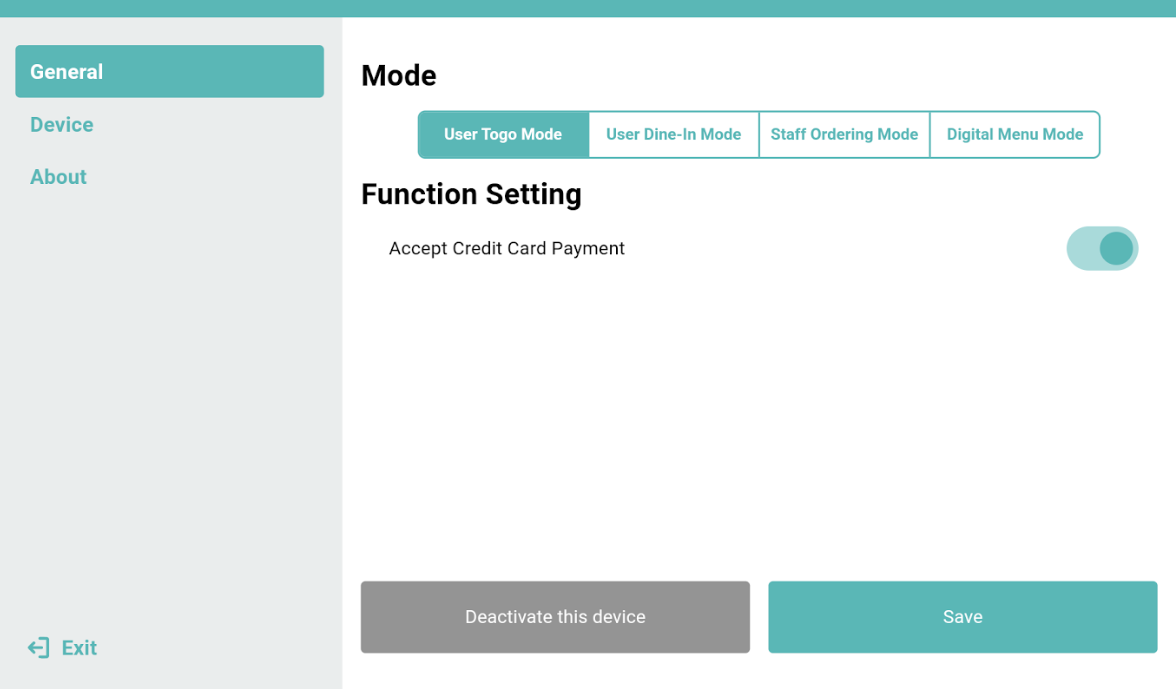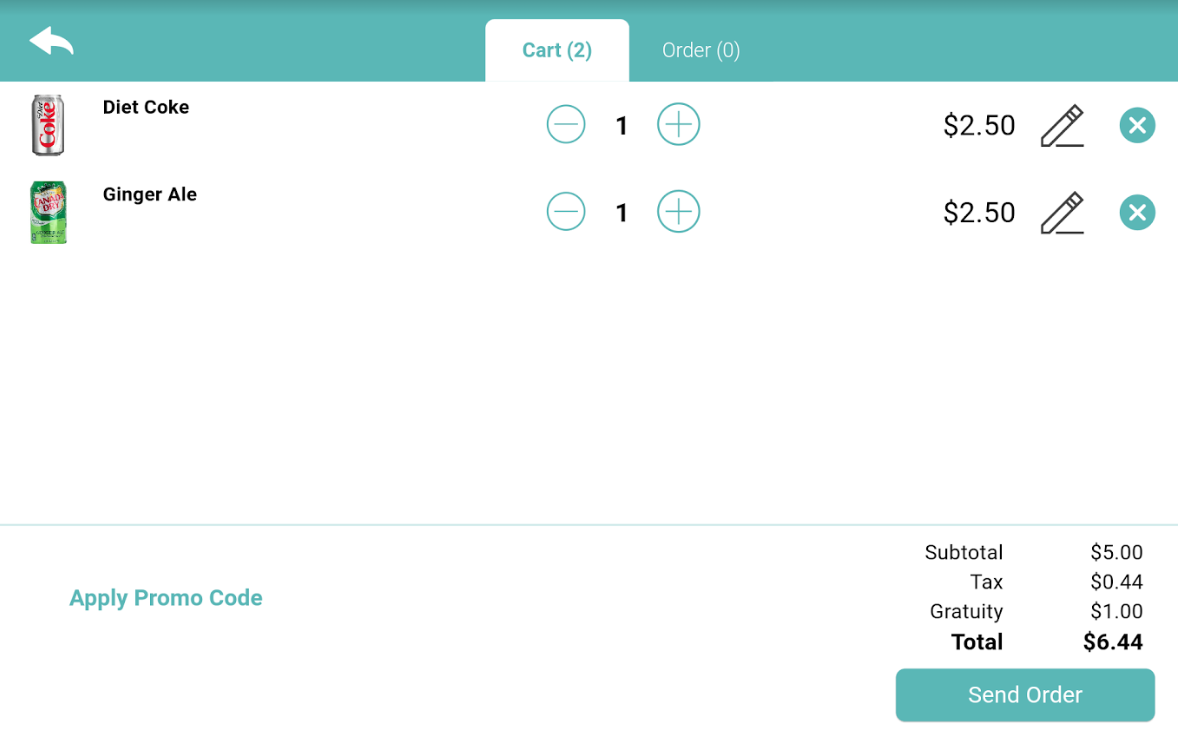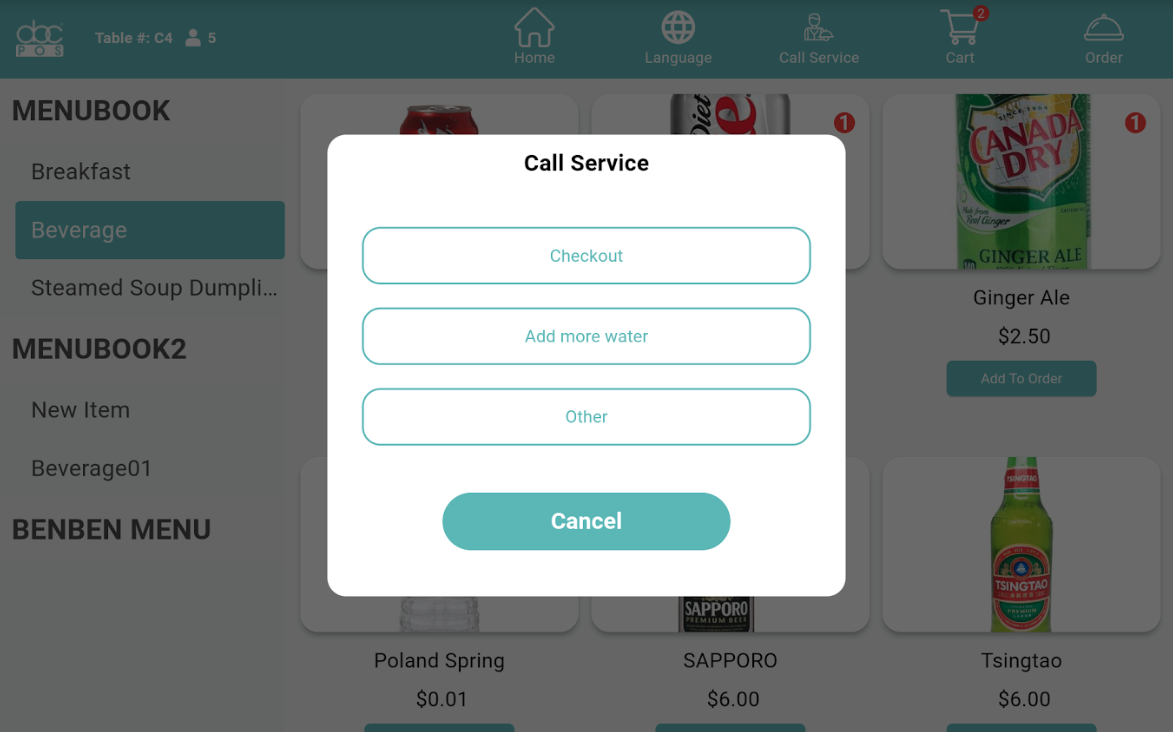Function Overview
In certain business scenarios where customers need to place multiple orders and view menus several times (such as hot pot or buffet restaurants), traditional restaurants that rely on manual waiter service can consume a significant amount of human resources. At ABC, we introduce the tablet ordering function specifically designed to help dining establishments reduce labor costs and enhance efficiency while providing a seamless ordering experience to improve the dining experience for customers. It acts as a dedicated restaurant server, ready at the tableside to promptly address various customer needs.
It encompasses various usage scenarios, including user ordering, waiter ordering, digital menu, and more, making it versatile to meet diverse needs.
Four Ordering Modes
The feature currently implements four ordering modes: ‘User Togo Mode‘, ’User Dine-In Mode,’ ‘Staff Ordering Mode’, and ‘Digital Menu Mode’.
Within the settings page, we can switch between different modes by toggling the mode cards. Each mode has dedicated settings options, allowing seamless switching between functionalities.

User Togo Mode
Our User Togo Mode encompasses the functionality of the previous version "Self Order iPad," and in this upgrade, we have included it within the Tablet Ordering feature. Additionally, we have expanded its operating platform from just iPad to all platforms.
If the credit card payment toggle is disabled, only the option to complete the order, print a receipt via a nearby printer, and then pay at the front desk with the receipt will be supported. If the toggle is enabled, users can choose to make card payments using the nearby card reader on the tablet.
For the specific feature explanation, please refer to the following link:
Ordering a Cake Using Self-Order-iPad
User Dine-In Mode
This mode is designed to help diners place orders after being seated at a table. There are three functional settings:
1. Select Table Number: Choose the table number served by the product, which can be switched by entering the settings page.
2. Direct Kitchen Sending: When this toggle is enabled, after diners complete their orders, they can independently send the order to the kitchen with one click. When this toggle is disabled, after diners complete their orders, clicking "Submit Order" will prompt a "Waiter Operation" window, requiring the waiter to input the corresponding password before sending the order to the kitchen. This is done to ensure the accuracy of sending orders.
3. Call Service Device Setting: This is a setting managed by technical support. It allows the device to be associated with the corresponding POS system as needed.
The user operation flow for this feature is as follows:
Step 1:Start Ordering
Once the user sets the preferred language on the homepage, they can begin placing orders.
Step 2:Add dishes to the cart
On the left side of the page, there are two levels: 'Menu Book' and 'Categories,' used to display dishes. After selecting a specific dish category, the dish details will be shown on the right side of the page. Tapping the 'Add' button below the dish on the right will add the corresponding dish to the cart. If only one menu book is available for tablet ordering, the left side will directly display the category level within that menu book.
For some dishes, selecting 'specifications' and 'side' is required when adding them to the cart. Customers can follow the specific page information to guide them through the addition.
Step 3. Confirm the cart
After adding items, users can access the shopping cart by clicking the 'Cart' button in the top right corner of the ordering page to review the selected dishes. Once the dish details are confirmed, they can click the 'Send' button to prepare the order for the kitchen.
Thus, the customer's process of placing an order is completed. Now, all that's left is to wait for the delicious dishes to be served.
Confirmation before Sending(Direct Kitchen Sending Disabled)
The process for the Confirmation before Sending mode is similar to the Direct-to-Kitchen. After the diner finishes the order, the server requires an additional confirmation step. This intervention by the server ensures accuracy and efficiency when sending the ordered dishes to the kitchen.
When the server approaches the table, they can close this window to verify and confirm the items added during this session. Afterward, they can enter their employee PIN code to send the items in the cart to the kitchen.
Call Service
In this mode, customers can also call for human assistance anytime by clicking the 'Call Service' button at the top of the ordering page. Additionally, they can view the dishes that have been sent to the kitchen by clicking the 'Order' button at the top right corner.
In this commercial scenario, our method for user checkout is to contact the nearby server for payment. Therefore, this mode does not offer payment methods like cash or credit cards. When the user clicks the 'Check Out' button, a server request will automatically be sent to POS.
Staff Ordering Mode

This mode is designed for waitstaff use, enabling them to conveniently use tablets to assist diners with ordering at their tables. There are three settings under this mode:
1. Employee Served: Considering the frequent scenario in tablet ordering where each staff member assists with one device, we have implemented the feature of binding each device with a specific staff member. Allows users to select their name from the list of all waitstaff in the current store.
2. Lock Table Number: This setting determines whether waitstaff need to enter the table selection interface each time they operate the tablet. If enabled, the user will need to select a table.
3. Accept Credit Card Payments: Functions similarly to the User Togo Mode and does not require further elaboration.
Digital Menu Mode
Under this mode, ordering functionality is not supported, it's solely for users to browse the menu. Therefore, there are no settings available in this mode.



